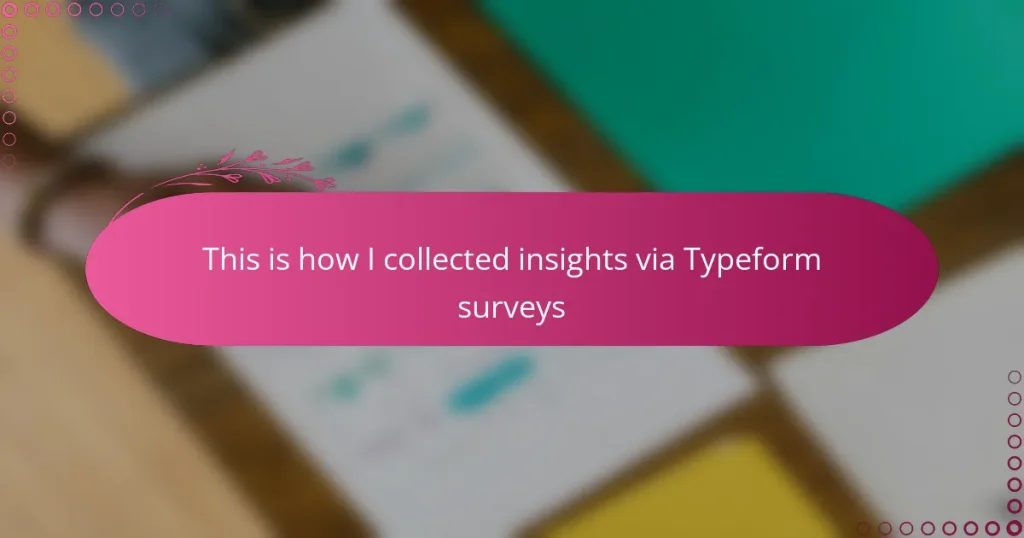Key takeaways
- Typeform’s interactive and customizable format enhances respondent engagement and leads to more honest feedback.
- Surveys provide clarity and quick insights, allowing marketers to make data-driven decisions without assumptions.
- Effective question design and personalization of surveys significantly increase response rates and data quality.
- Analyzing both quantitative and qualitative data transforms raw insights into actionable marketing strategies that resonate with audiences.
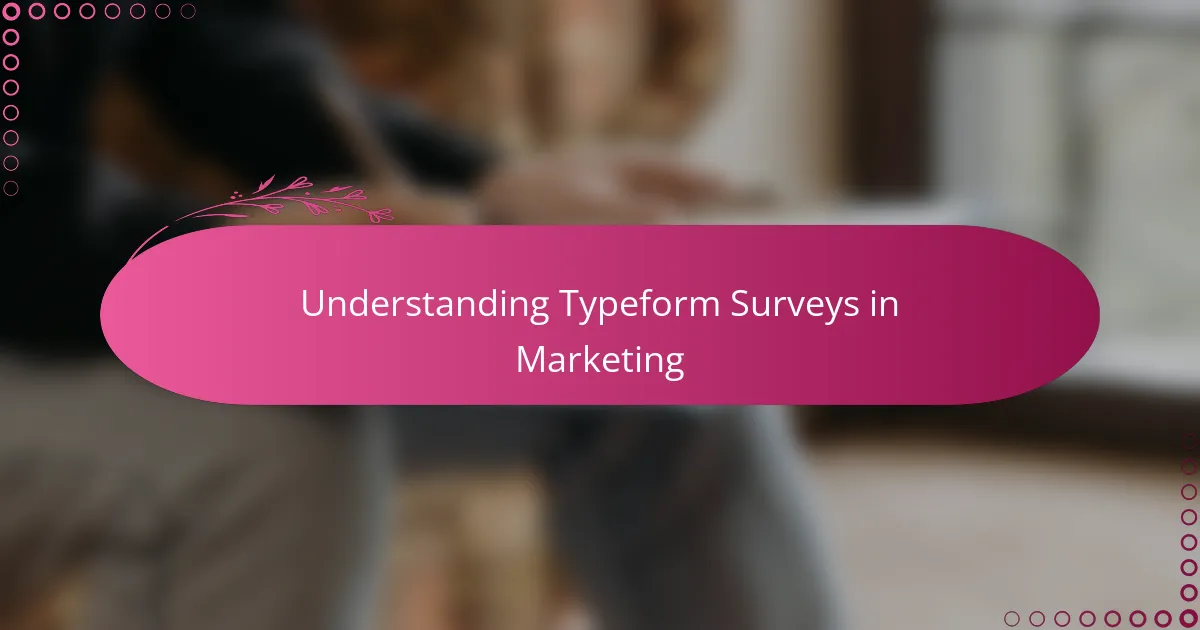
Understanding Typeform Surveys in Marketing
When I first started using Typeform for marketing surveys, I was struck by how its interactive format kept respondents engaged. Unlike traditional forms, the conversational style feels less like a chore and more like a genuine exchange. Have you ever noticed how much more honest people are when they’re not staring at a boring, endless questionnaire?
One thing I’ve come to appreciate about Typeform is its ability to customize every step, from visuals to question logic. This flexibility lets marketers like me tailor the experience, making it relevant and intuitive for our target audience. It’s a game-changer when you realize that better user experience leads to richer, more actionable data.
Understanding Typeform surveys in marketing isn’t just about creating pretty forms—it’s about tapping into human behavior. When respondents feel heard and respected, they open up with insights that campaigns can truly build on. That’s why, for me, Typeform isn’t just a tool; it’s a bridge to authentic customer understanding.
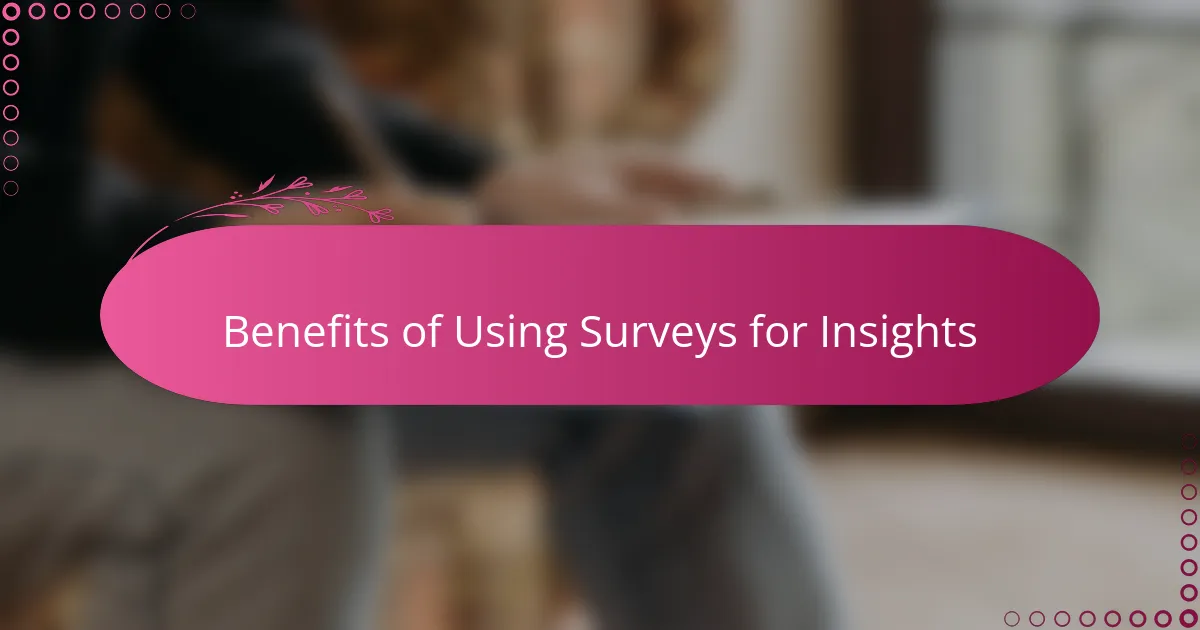
Benefits of Using Surveys for Insights
There’s something powerful about collecting insights through surveys that truly resonate with me. When I analyze responses, I’m not just seeing data points—I’m uncovering real stories and feelings that help shape smarter marketing strategies. Have you ever noticed how firsthand feedback can suddenly make a campaign idea click into place?
One big benefit I’ve experienced is the speed with which surveys provide clarity. Instead of guessing what customers want, I get direct answers quickly, which saves precious time and cuts through assumptions. It’s like having a conversation with your audience without the awkward pauses or misinterpretations.
What really stands out to me is how surveys can highlight nuances that otherwise go unnoticed. Small details in responses often reveal opportunities or pain points I hadn’t considered before. Isn’t it fascinating how a few well-phrased questions can open doors to fresh ideas and deeper connection?
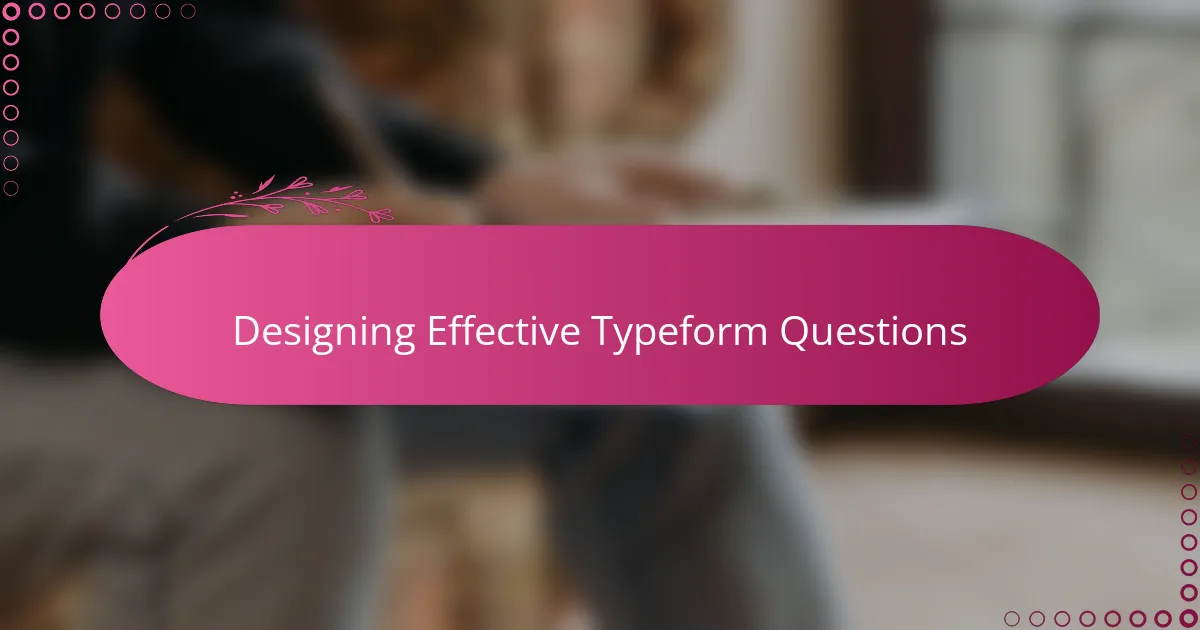
Designing Effective Typeform Questions
Designing questions in Typeform felt like crafting a conversation rather than just drafting a form. I realized early on that the way I phrased questions directly influenced the tone and flow, making respondents either eager to continue or ready to quit. Have you ever stopped filling out a survey because the questions felt robotic or intrusive? That’s exactly what I wanted to avoid.
I found that mixing question types—like multiple choice, rating scales, and open-ended prompts—kept things interesting and encouraged thoughtful answers. It’s a delicate balance; too many options overwhelm, but too few leave gaps. From my experience, asking clear, concise questions helped respondents focus, which in turn produced more honest and richer feedback.
One trick I swear by is using logic jumps based on previous answers, so the survey feels tailored to each respondent. It makes the experience feel less like answering questions and more like having your specific concerns acknowledged. Doesn’t it feel better when a form understands you rather than treating everyone the same? That personal touch truly makes a difference in data quality.
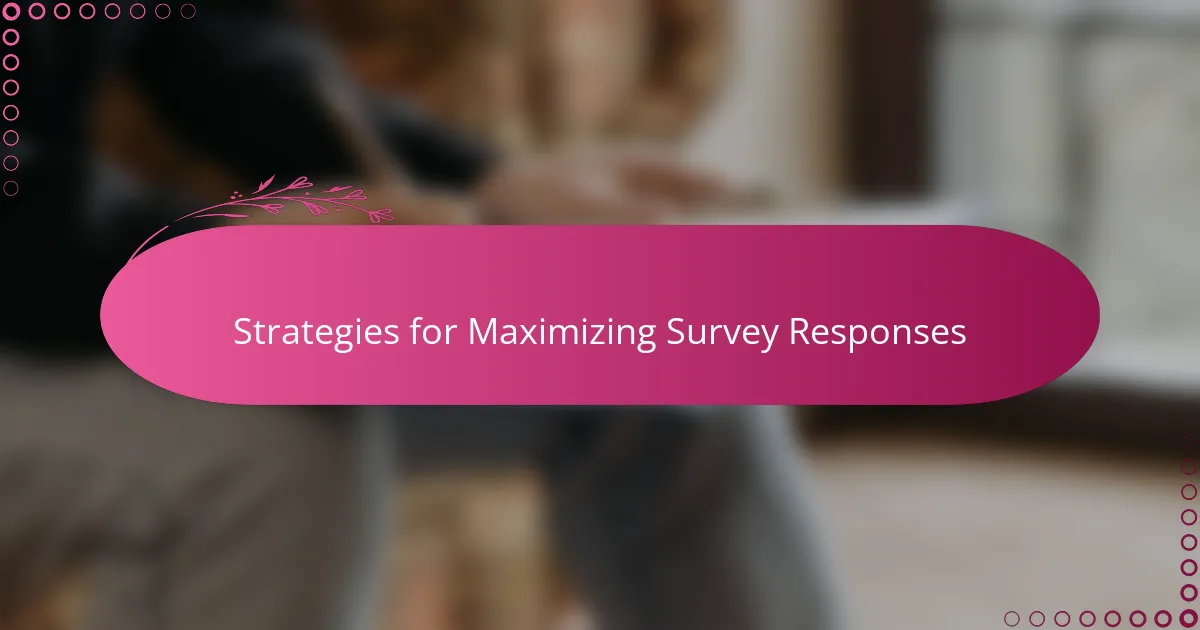
Strategies for Maximizing Survey Responses
To boost survey responses, I learned that timing is everything. Sending out surveys when people are most receptive—like mid-morning on weekdays—really made a difference. Have you ever noticed how your own willingness to engage ebbs and flows throughout the day? Tapping into that rhythm gave me a clearer path to capturing attention.
Another strategy that worked wonders for me was keeping the survey short and sweet. I always reminded myself: if I wouldn’t want to spend more than five minutes on it, neither would my audience. This respect for their time translated into higher completion rates and more thoughtful answers.
Finally, I found that personalizing the survey invitation, even just a little, changed the game. Addressing respondents by name and explaining why their input matters helped them feel valued rather than bombarded. Isn’t it amazing how a small gesture like that can turn a cold ask into a warm conversation?

Analyzing Data from Typeform Surveys
When I dove into analyzing data from Typeform surveys, the first thing that struck me was how clean and organized the responses appeared. The platform’s built-in analytics tools made it easy to spot trends without getting lost in overwhelming spreadsheets. Have you ever felt buried under raw data, unsure where to start? Typeform’s visual summaries made that anxiety disappear for me almost immediately.
I also appreciated the way I could filter responses based on specific criteria, allowing me to zoom in on high-value insights. For example, isolating feedback from a particular demographic helped me tailor marketing messages more precisely. It’s powerful how slicing data thoughtfully turns heaps of answers into clear, actionable steps.
But the real magic came when I combined quantitative results with open-ended responses. Reading through personal comments breathed life into the numbers, revealing not just what people thought, but why they felt that way. This qualitative depth gave me stories to tell and ideas to explore—something raw metrics alone could never deliver. Isn’t it remarkable how a few well-crafted questions can transform data into human stories?
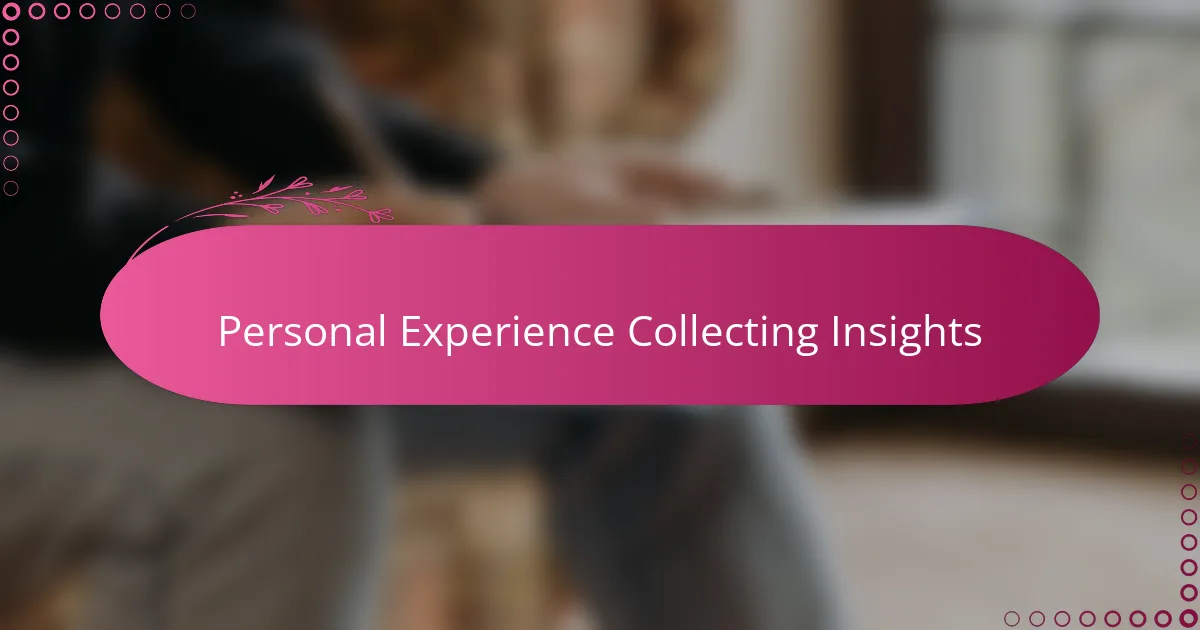
Personal Experience Collecting Insights
Collecting insights through Typeform surveys quickly became more than just a routine task for me. I found myself genuinely curious about each response, almost like listening to a friend’s story, which made the process feel rewarding rather than tedious. Have you ever felt that shift—from seeing data as mere numbers to recognizing the real people behind them?
One moment that stands out was when a simple open-ended question revealed a surprising pain point I hadn’t anticipated. It was a reminder that sometimes, the most valuable insights come from giving people room to express themselves freely. That’s when I realized how important it is to design surveys that don’t just extract answers, but invite meaningful conversations.
Analyzing those insights also felt personal. Rather than drowning in spreadsheets, I could connect dots, uncover patterns, and imagine how these findings could shape future campaigns. Isn’t it incredible how a well-constructed survey can turn a collection of responses into a roadmap for authentic customer engagement?
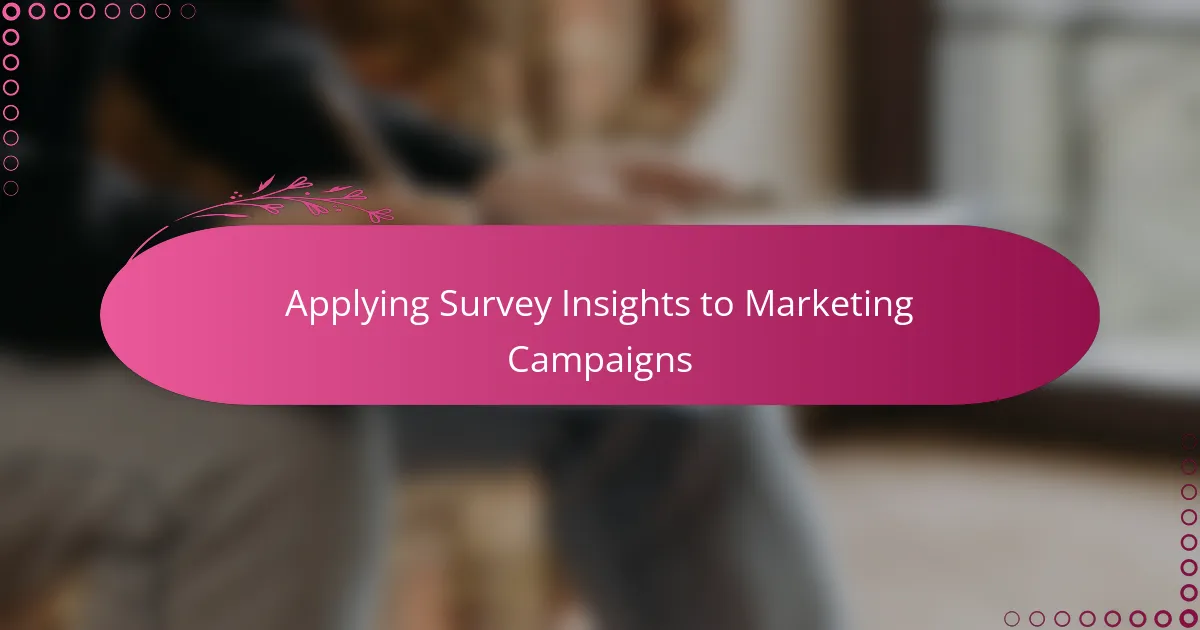
Applying Survey Insights to Marketing Campaigns
Applying survey insights to marketing campaigns felt like unlocking a new level of connection with my audience. I remember one campaign where a subtle shift in messaging, based on feedback about customer values, led to a noticeable boost in engagement. Have you ever tweaked a headline or offer and seen the whole response change? That’s the power of listening closely to what people really want to say.
It’s not just about data points—I found that turning insights into storytelling made campaigns resonate on a deeper level. When I integrated direct quotes from survey respondents into social ads, the authenticity grabbed attention in ways generic claims never could. It made me realize that marketing isn’t just promotion; it’s a conversation built on trust.
Sometimes, even small insights sparked big creative ideas. For instance, discovering that customers preferred quick tips over lengthy articles inspired a series of bite-sized videos that performed remarkably well. Isn’t it exciting when your marketing strategy evolves naturally from real customer voices rather than guesswork? That’s when I knew survey insights had truly become the backbone of my campaigns.
